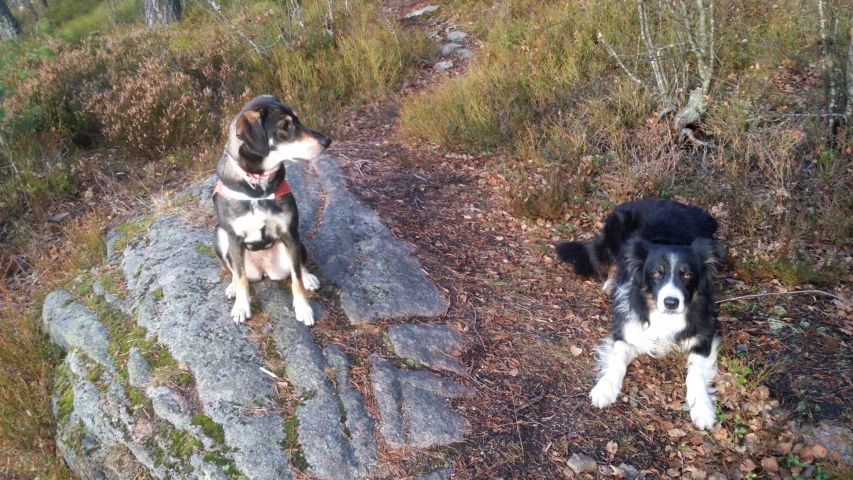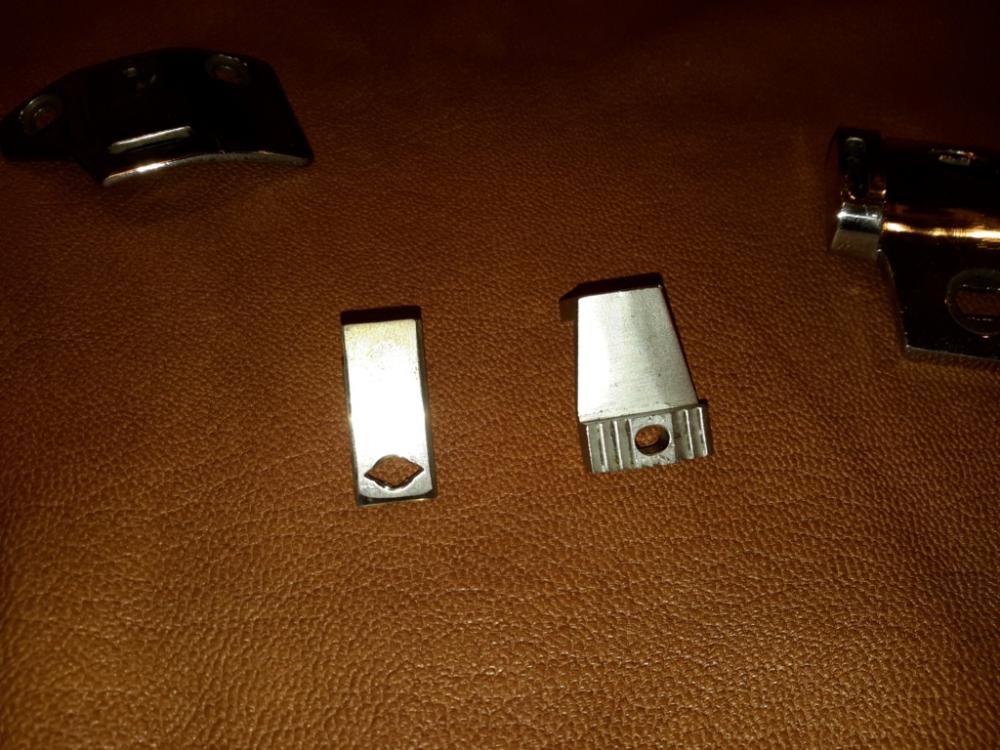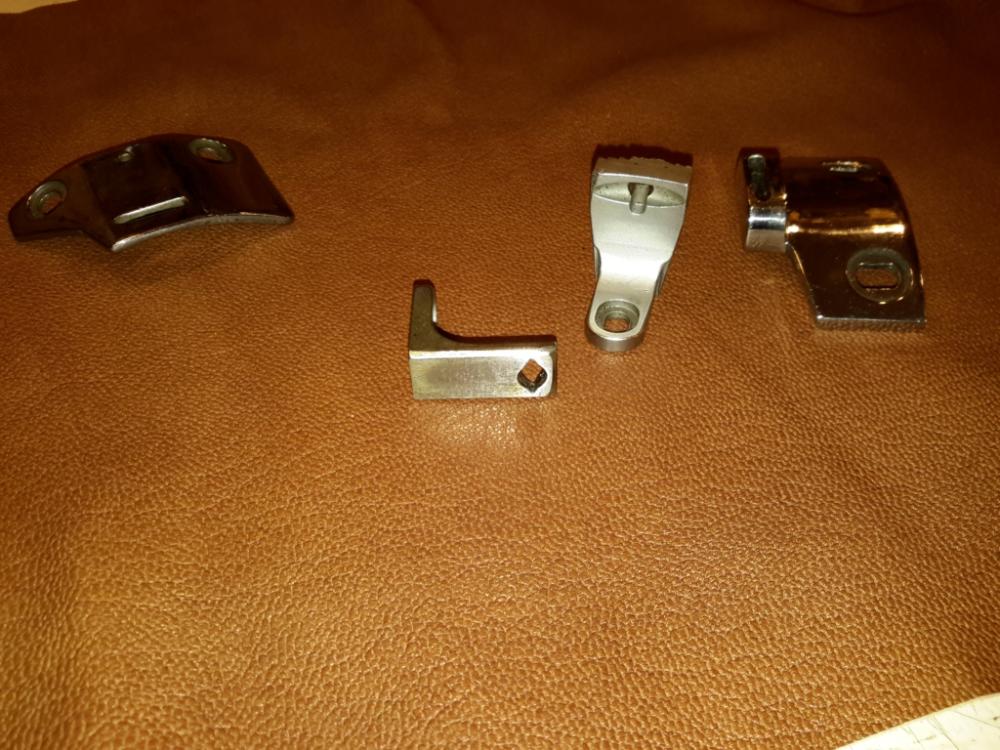-
Posts
1,591 -
Joined
-
Last visited
Content Type
Profiles
Forums
Events
Blogs
Gallery
Everything posted by Trox
-
I agree it's an Adler 20-20, the last picture gave some more details. The highlift machines has in addition to spacers between the head and the base a extra gear wheel beside the hand wheel (a gear reducer) and the one with 40 mm lift a built up top bearing for the presser foot bar (top front). They are easily reconized. I do not understand the talk about the Singer kl 7. This is a original Adler machine, the Singer 7 is a black machine. The Singer 7-31 has a different casting in the head too, the base for the leaf spring fixture and the base for the thread spool is casted on the head. Singer 7-31 has a different hand wheel too. If it has any Singer parts they are often stamped "Simanco" but that does not make it a Singer machine. The only way to achieve that is to change the entire head, I do not understand why you would want too, you should be happy it's an Adler. Singer machines are popular in USA, the UK and by our member Constabulary, the rest of the world will choose the Adler machines ( that's my opinion anyway ) Most of the mainland European used machine dealer don't want the Singer machines (unless they are very special and do not have counterparts). I cannot speak for the hole world of course, this is something I use to joke about...and my own opinion. Tor
-
Kwokhing.com has binders that fit both cylinder and flatbeds. I bought a couple for my Pfaff 345 cylinder bed machine that works great (90 degree mounting) heavy leather binders that also fit my 441 machine I necessary. Very happy with these binders, can post a pic of my setup later. (I'm not selling anything) Tor
-
Now I see I really should have bought the zipper guide KG-NR with regulating guide, that's what I need right now changing zippers in a boat top. I think that's new, I did not see that one when I bought mine. However, I can easily modify mine and use the guide from the welting attachment illustrated in KG767T. That welting attachment was available separately when I bought it (with out the suspending guide). Tor
-
Singer class 7 and Adler 20 are about the same machine with many interchangeable part. Is there any Simanco parts on it that gives you that idea. I know they uses the same hook. Tor
-
When you are past the 50 ties like me you appreciate white to get more light. But original is always the best choice, looking beutiful. About the possible subclass: It's a bit difficult to see by the picture, but it looks like it has alternating pressers. If that's the case it might also have 16 mm foot lift and one needle, needle system 794. That's the spec of an Adler 20-19. The class 20-8 and 20-8a both have a spring loaded (jump foot) and very high foot lift; 30 and 40 mm. These are also easily recognized by a gear speed reduser on the handwheel. The needle system on these are the1000 u and they are both one needles. The class 20-200 o has upper transport and two needles, system 794. The rest of the machines has bottom feed only (part from one with puller feed and a couple with special attachments for sewing buffing wheels). But of course there are always special versions and custom builts. But these are the serial produced machines for the export marked who is recorded. So if it fits the first "profile" with two pressers that alternates, it's most likely a Kochs Adler 20-19. The class 20 was replaces by the newer class 120 in 1975. Who was made until 1993. The Adler 120-30 is still made today on license by SL sewing machines Germany and cost a small fortune. Tor
-
Artisan model will typically be made in China or Taiwan. In Scandinavia most used older clicking machines are German or Italian made. Common European brand are Sandt, Atom, Schön and Moenus. You will also Find Canadian and US made ones. Chinese machines are of newer model but could very well have broken electronics, not their strongest knowledge good luck
-
Most common models will have the safety factors of two triggers that has to be pressed simultaneously, hight adjustment of the hammer (head) and time of the stroke. Perhaps also something for the oil pressure/level and temperature, not very complicated electronics. If you have the brand and model number you can search for a manual/ part list (pdf) for it.
-
They aren't all constructed the same, it depend of brand and year. Some have manual hight and stroke adjustment, some electronic. Mine is old and all manual. What brand is it. Guess that the time of the stroke is adjustable on some models too and can be used for embossing/wet forming. I use a simple old cast iron book press for embossing, when time is a factor more than the pressure. Tor
-
Got those guides on all of my machines, can't live with out them anymore. Especially, I like the option of attachment you can use on these. Like welting, zipper and center guides (for French seams) etc. Just fold it up and out of the way when you don't need it anymore, a real simplifier and time saver.
-
I use the same guide on my 441 with a self made adapter, made before I have seen Uweˋs solution on the hand foot lifter.
-
The Adler 67 can use all the same parts as the newer 167, part from the hook. However, lots of aftermarket parts for this machine.. Uses the same presser foot as the following: Adler and Duerkopp Adler machines 69, 68,167,168,169, 267, 268 and 269. Pfaff uses a different presser foot. Kwokhing.com have many different presser foot that fits your machine along with other parts. No worries.
-
What makes those real time systems expensive is that they need a GSM phone card subscription along with the GPS system. Then the system will send you lots of SMS or emails with updated position (on time intervals, one a minute or so). Then of course it's a computer program that manages it all and display it graphically on your GPS receiving unit. This is how most of these such systems works today. Then the GPS unit is also backed up with GSM position and need of coverage of Mobil internet (for greater accuracy) . It's all in one package and it's a limit of how many collars you can use on one system. It's much used on hunting dogs here where I live.
-
I will echo Keplerts, those Weaver master tool punches are not bad. It's not easy to find good new punches anymore. And the new CSO ones are not near the quality of the old ones was. There might be something old stock in good shape too, check with moderator Bruce Johnson he sell nice old ones in good condition. Tor
-
Nice machine. But nobody makes a autofeed machine for those good old copper rivets.
-
It also seems like you have to clean up your sharpening wheel whit the dressing tool. Same tool that is used to square up any bench grinding stones, it normally a part of the skiving machines tool box. Sparks will fly and you will shape up your sharpening wheel angain. Campbell Randall (above) have both the tools you need. CampbelRandall, I need to buy a proper deburring tool myself. My round stone has worked well but it's a bit risky because it can break off. Do you have it in stock. Tor
-
You always have to grind both side of any knife. I use a round long grind stone for deburring the inside of the bell knife and finishing of by grinding both sides simultaneously- stop at the ecaxtly same time. This way you will not create burrˋs on any side of the bell knife. Campbell Randalll USA and Fortuna Werke service (on facebook) both sells that de-burring tool. Tor
-
Hi, I know this is an old topic. I have an old 236W-100 standing around that are missing these same belt you talking about. I do not know what I'm going to do with this machine, I got it for free myself. I tried to give it away a couple of times without luck However, I guess it would be easier with a working machine. I might also use it for some delicate work myself, I sure like the look of the head. Reminds me of the style of 1950-60 ties USA, it looks like and old tractor or a cartoon space ship Did Bob find the belt for it. Thanks Tor
-
Hi Contabulary, yes "discreet", but on the Adler you could adjust easier the hitting same holes when backstitching. Like the paper trick on the hitting the same holes in reverse the on 441 clone. (in short, lots of adjusting/ pain in the ..... to solve it doing it by the manual) The "old fashion" look of the Adler system took care of that in a easy way. Anyway, hitting the same holes in reverse is normally not any big problems on bottom feed machines. By the way, you all did a great job restoring that Textima skiver. Tor
-

Video: Lower Needle Guide for Juki TSC-441 class machines
Trox replied to Uwe's topic in Leather Sewing Machines
Hi Uwe. yes I know that manufacturing several with the same precision is a challenging task. All things sell slow in the beginning, before the customers know they exist and that they need it. Remember how many different 441 clones there are and all the other types of machines that are based on the same head. Like sewing automats, bartacker...You name it. And it belongs in every 441 saddlers attachment pack do you ask me. After I installed this guide my favorite setup is the slotted plate and harness presser foot. Sewing leather with smooth feet and feed dog the needle does most of the feeding anyway, the feed dog is more a problem than help most of the time. You already have a Ebay store and a web site selling part, ask your manufacturar. I think you will get rid of a lot more than 30 pieces, perhaps some of the companies selling these machine want some of them too. If the price is right, that goes for everybody of course. By the way, the seller of this original Ferdco guide had two guides for sale. The other one had a round needle hole instead of the diamond shaped one that I bought, but they where both original ferdco parts he ensured me. I bought this one because it looked like the original illustration of the part from ferdco.This was some time ago and I would guess the other guide is sold now too. I think there was a description about the diamond shaped needle hole in the patent papers of this part, I cannot remember what it was anymore. I can understand the idea behind it this shape , but I do not think it will have enought practical avantage for the extra cost to make it like that. Some very nice part you got in that Ebay store, I specially liked that solution of the foot lift allowing a roller guide and the flat 441 Adler style needle plate. Looking very good those flat bed attachment too. Keep up that nice job! Tor -

Video: Lower Needle Guide for Juki TSC-441 class machines
Trox replied to Uwe's topic in Leather Sewing Machines
HI Brian, It would not be to hard to make this lower guide out of a L angle iron or something, you can do most of the job with a bench grinder, drill press and/or a Dremel tool. It does not matter if it's soft steel, yes you can even try to harden it when it's finish. It's not a very complicated job. Our we can ask the Hightex/ Cowboysew.com to make it. They are always looking for new products, mostly machines that is. But it does not hurt to ask, the worst that can happens is getting a No Having such part installed or in their accessories would be a business advantage, they already have every thing else for these machines. It's a very useful accessory indeed. Tor -

Video: Lower Needle Guide for Juki TSC-441 class machines
Trox replied to Uwe's topic in Leather Sewing Machines
Thanks for posting Uwe, I was lucky to find a second hand Ferdco lower N guide. My machine has worked flawless with special needle plates since I installed it. My toothed feed dog is hollow beneath so it was impossible to modify it (see pics). I would not be any material left if I did the same thing with mine as Uwe did. The toothed one might come in handy sometimes too, if I had not stumbled over the Ferdco guide I would have bought another toothed one for modernizing (a more rigid one of course). I also reduced the hight of my bag (stirrup) plate, this way I have more lift when using it and better material support (for my needs , that is). My machine did not function well with that high plate and skipped stitches frequently, it worked much better with the reduced hight.. and later with the lower guide....flawlessly. Tor -
Hello Adler fans, I haven't read all the post in this topic. Here is an resource for old Adler documentation http://sew24.blogspot.no/p/downloads.html Quite a few old Adler 20 has turned up for sale lately, it's a couple for sale here in Norway at the moment too; and the prices has dropped pretty much the last years. In the German pdf below you can see what classes/subclasses they made, what year and so on. Some of the cl. 20 had a "monster" foot lift of 40 mm but only bottom feed and jump foot (spring loaded presser foot, not driven). The one with alternating presser foot, 20-19 has only 16 mm foot lift. VanRhodes, I have a little white (very fine) ceramic sharpening stone I use to fix burrs /chips in hook tips. Remember that a feed dog also works as a "lower needle guide" making sure the needle is not pushed away from the hook and cause skipped stitches. I saw yours was not compleete, the needle can be pushed away from the hook (by the material, thread tension and so on). Those cl. 20ˋs are very strong machines but you got to custom make some pressers for them if you going to use them for leather work, the original ones are very big and clumsy. Happy Eastern, Tor hist_kl-1.pdf
-
Thank you all! That's just what I want to hear Uwe, thanks. We are going to order some stuff from Kwokhing. I have their new catalog and there are more stuff there for the Juki machines than online. Nothing for the DNU 241 H machine, but a lot of stuff for the 15xx series machines. We compared my Pfaff 345 feet and the only thing that did not line up was the screw hole in the outside foot. It affect the height of the foot of course. Again thanks Uwe, very clever searching the Ebay, why didn't I think of that myself
-
Hi, a friend has a Juki 241 flatbed (triple feed) sewing machine and he wonder what other newer Juki model that uses the same presser foot. The presser foot looks like the same types used in Pfaff 335, 1254, 345 and so on. And many Singer models, it has that outside foot that goes inside a split presser bar. As you we'll understand he is looking to buy some aftermarket pressers for his machine, like left/right toe and so on. In advance thank you. Tor
-
Campbell Randall has pressers and feeding wheels for skiving machines, the feed roller are sold on width, 50 and 30 mm (and more) they are pretty universal parts that fit most skiving machines ( Chinese Fortuna clones). I have a steel wheel that I'm using on vegtan and heavier leather, stone wheel for upholstery type leather. My machine has a suction/exhaust system and I never had this trouble with any of my feed wheel. Tor




